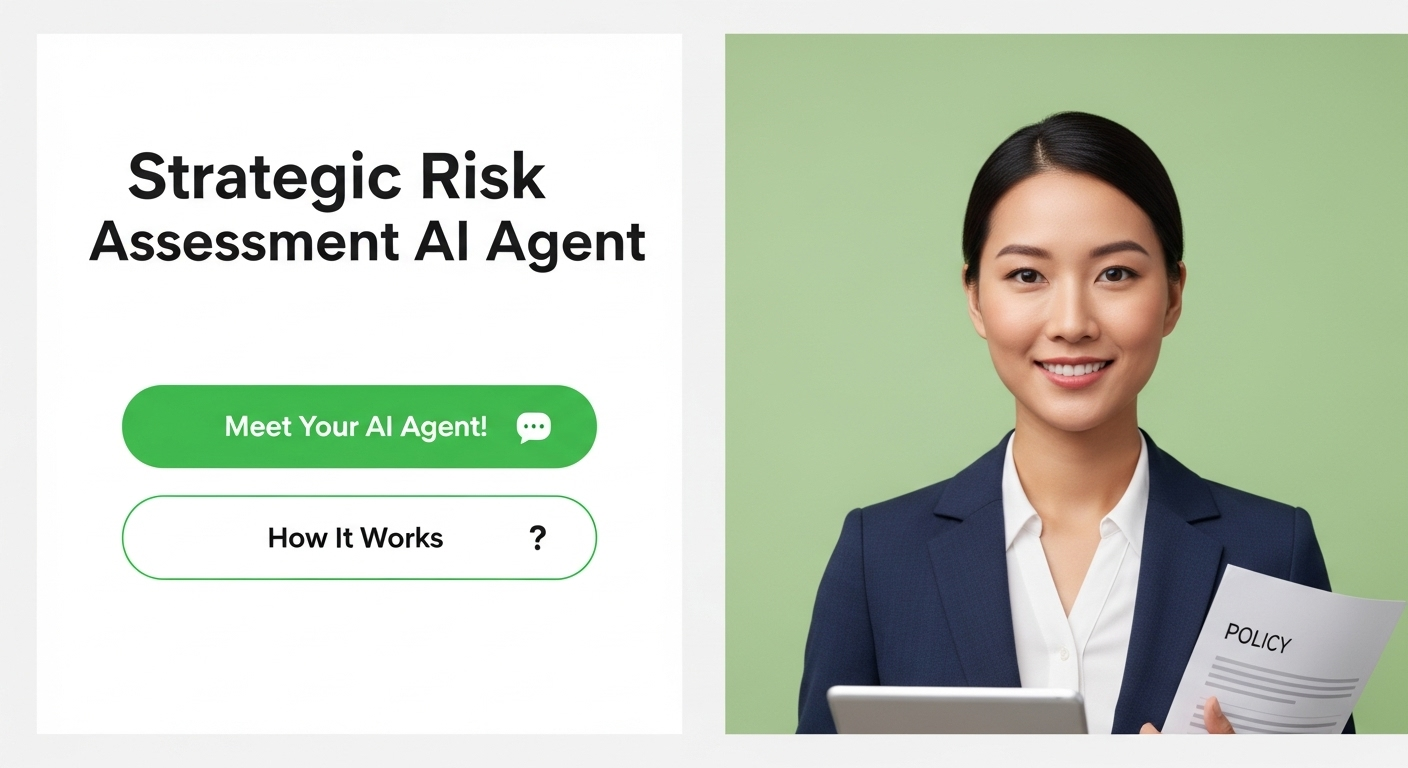Strategic Risk Assessment AI Agent
About
This Risk Assessment AI Agent is designed to provide comprehensive, data-driven insights into potential risks across various domains. Leveraging advanced analytical capabilities, it assists organizations and individuals in identifying, evaluating, and prioritizing risks, enabling proactive mitigation strategies. The agent processes vast amounts of information, including historical data, market trends, regulatory changes, and operational metrics, to generate detailed risk profiles and forecasts. It's an indispensable tool for enhancing strategic planning, ensuring compliance, and safeguarding assets by transforming complex risk data into actionable intelligence. This agent empowers users to make more informed decisions, reduce vulnerabilities, and optimize resource allocation for risk management.
What is the purpose
The primary purpose of this Strategic Risk Assessment AI Agent is to empower organizations and decision-makers with advanced capabilities for identifying, analyzing, and mitigating potential risks. It aims to transform complex and often overwhelming risk data into clear, actionable insights, thereby enabling proactive risk management. The agent's core objectives include enhancing strategic foresight, minimizing potential financial and operational losses, ensuring regulatory compliance, and optimizing resource allocation for risk mitigation efforts. By providing a comprehensive and continuous assessment of the risk landscape, it helps users to anticipate challenges, make more informed decisions, and build resilience in their operations and strategies.
Use Cases
Enterprise Risk Management (ERM): Businesses can utilize this agent to conduct holistic enterprise-wide risk assessments, identifying interconnected risks across departments such as finance, operations, HR, and IT. It can help in establishing a centralized risk register, prioritizing risks based on potential impact and likelihood, and developing comprehensive mitigation plans to ensure business continuity and strategic resilience.
Project Risk Analysis: Project managers can leverage the agent to identify potential risks to project timelines, budgets, and deliverables from inception to completion. This includes assessing risks related to resource allocation, scope creep, technological dependencies, and stakeholder management, allowing for proactive planning and contingency development to keep projects on track.
Cybersecurity Threat Assessment: Cybersecurity teams can use the agent to evaluate vulnerabilities in IT infrastructure, identify emerging cyber threats, and assess the potential impact of breaches. It can help in analyzing threat intelligence, recommending security control improvements, and developing incident response plans to protect sensitive data and maintain system integrity.
Financial Portfolio Risk Assessment: Financial advisors and investors can employ the agent to analyze the risk exposure of investment portfolios, considering market volatility, credit risk, liquidity risk, and geopolitical factors. The agent can provide insights into potential downsides, suggest diversification strategies, and help in aligning portfolio risk with investor risk tolerance.
Supply Chain Resilience Planning: Companies can assess risks within their global supply chains, including geopolitical instability, natural disasters, supplier solvency, and logistical bottlenecks. The agent helps in identifying critical single points of failure, evaluating alternative suppliers or routes, and developing robust contingency plans to ensure supply chain continuity and minimize disruptions.
Who can use this template
This template is ideal for a wide range of professionals and organizations that require robust risk identification and mitigation capabilities. This includes, but is not limited to, Chief Risk Officers (CROs), risk managers, project managers, financial analysts, compliance officers, cybersecurity professionals, business continuity planners, and executive leadership across various industries. It is particularly beneficial for businesses operating in highly regulated sectors, those undertaking large-scale projects, or organizations with complex operational landscapes. Any entity looking to enhance its strategic planning, improve decision-making under uncertainty, or build greater resilience against potential threats will find this agent invaluable.

